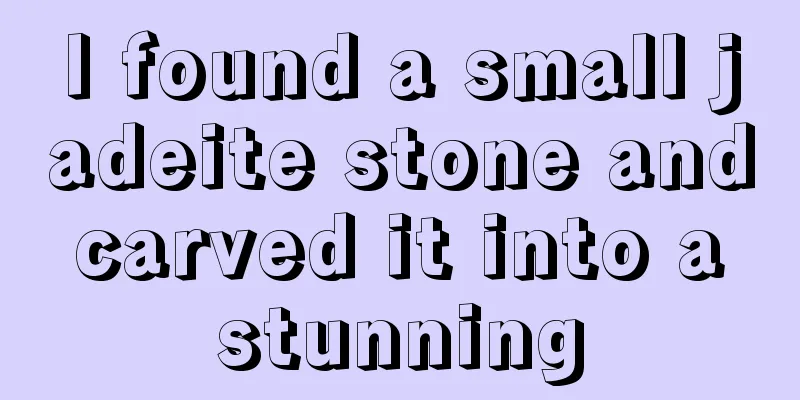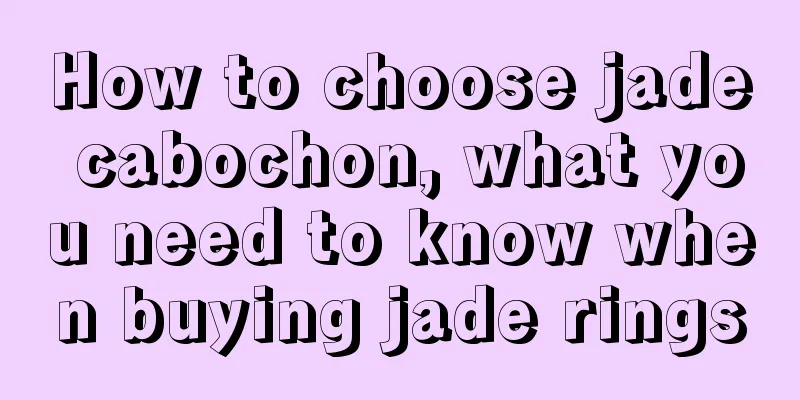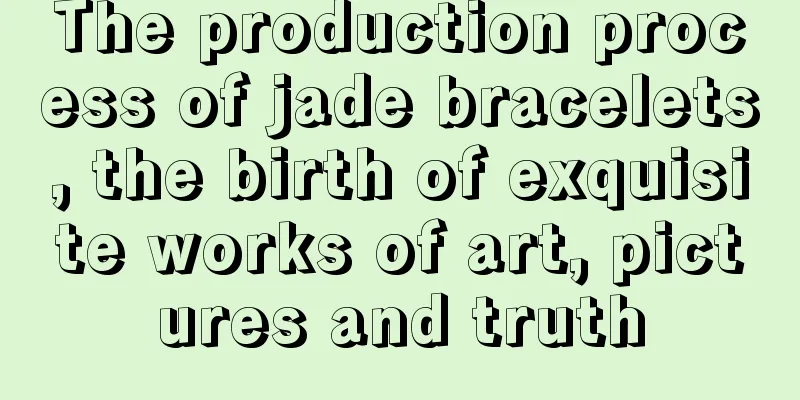How dare you call it glass-type jade when it is so thin? Does the thin glass-type jade have to be cut intentionally to deceive people?

|
When it comes to the quality of jade, we all know that it can be divided into four grades: bean, glutinous, ice, and glass. The lowest is the bean type and the best is the glass type. So once we say it is glass-type jadeite, we will all think that the quality of this jadeite is good. However, many friends also know that the quality of a jadeite is not only determined by its quality, but also by other aspects such as size and thickness. And a friend complained about something the other day. He said that a seller said that the brand he was selling was glass-type, but the friend said, it was obviously so thin, and they dared to say it was glass-type, it was obviously cut very thinly! Just like the inlaid Wu Shi Pai in the picture, we can see that this Wu Shi Pai is very transparent and the fingers behind it are clearly visible. But we also saw that this piece of jade is indeed very thin. That friend said that it is a piece of jade that is almost as thin as paper, and they have the nerve to call it glass-type. It is obviously cut thin on purpose to pretend to be glass-type. I have said before that some glass-type jadeite is not real glass-type jadeite, but the effect of deliberately cutting it thinly. But this does not mean that all thin jadeite is cut and is not glass-type. A real glass-type jadeite, even if it is relatively thin, is still glass-type. For example, like bean-type jadeite, the base is rough, not transparent, and the water content is very poor. No matter how thin we cut it, will it become glass-type? No, it's impossible. Even if it is cut as thin as paper, it will not have the characteristics of transparency and rigidity of glass. For example, those glass-type egg-shaped rings that we usually wear, some are very small and thin. Why can they be said to be glass-type? Therefore, we cannot conclude that a jadeite is deliberately cut to pretend to be glass-type jadeite simply because it is thin. That is not the case. Then why are there glass-type jade brands that are cut so thinly like the one in the first picture? Admittedly, we do not deny that some cargo owners intentionally cut the material so thinly in order to make more profits, but in many cases the material itself can only be cut so thinly. Friends who have just come into contact with jade may find this unreasonable. Since such a large piece can be taken out, why can only such a thin layer be taken out? This is indeed the case. The material may be a large piece, but if it is thicker, it may have lines or cracks, or sand holes, mineral spots and other defects. Therefore, in order to avoid those defects, it can only be that thin. And friends, think about it again, if it is possible to take thicker ones, would the owner not want to take them? For every cent thicker the glass gets, the price will double. To put it bluntly, if the glass can be thicker, the owner will never make it as thick as paper. To them, thickness is just a matter of cents, and the owner wants it thicker more than anyone else. Therefore, many times, it is not that the owner intentionally cuts it so thin, but that the material can only be used to make such thin glass products. Speaking of the price of such thin glass jade, many friends would think that the price must be much cheaper, after all, it is thin. In fact, this may not be the case. Some very thin glass-type jade brands, even if they are only more than three millimeters thick, will cost over ten thousand yuan at the beginning. Maybe everyone will think that this is an obvious trap. The thickness is not even four millimeters, but they dare to start with ten thousand words. Because for jade brands, anything less than five millimeters is considered relatively thin. Indeed, the thickness of three millimeters is relatively thin, but as I said at the beginning, the quality of a jade cannot be judged solely by its quality, but also by its thickness, size and other aspects. The same applies here. We cannot conclude that the price will be low just because it is thin. We also need to consider its water quality, rigidity and so on. The price of a jadeite depends on all aspects, including water quality, thickness, size, color, market factors, etc. Missing any of these points may result in errors, causing the price you see to be very different from the actual price. We can compare prices in this way. When we see a relatively thin piece of glass-type jade, we think to ourselves, if it is cut into egg-shaped surfaces and made into a ring, how much it would sell for. This way we can have a reference for its price. We can compare the price of a jade item we are more familiar with with the price of this jade. This way we can look at the price of this glass jade more objectively, instead of assuming that it must be cheap just because it is thin, or that it is a rip-off if it is not cheap.
fruit fcgc33 |
>>: What does A-grade jadeite mean? How to identify A-grade jadeite?
Recommend
What are the 9 most popular jade pendants among young women?
In our previous rankings of jade pendants, Guanyi...
What is the meaning of Jade Guan Gong
The main meanings of Jade Guan Gong are to make m...
What should I do if my jade ring is scratched? It's actually very simple
Although jade is very hard, there is a risk of sc...
Why is jadeite with simple shapes becoming more and more popular?
The most famous quote in the history of world des...
Jade + Buddha is a perfect CP combination, how much do you know?
Jadeite, the king of jade, has a long history and...
Is jadeite worth investing in? If we invest in jadeite in this way, it will definitely appreciate in value!
Jadeite jade is well-known as the king of jade. I...
Beauty Review: The Natural Beauty of Jadeite Created by Human Craftsmanship
An old saying goes: "Where there is jade in ...
A jeweler let it slip: You can easily tell whether jade is real or fake with just a bowl of water. Have you learned it?
Jade has been praised as the magic weapon of the ...
Jade leaves are popular among career-oriented people, but in fact there is much more to it than that...
Emerald Leaves As the saying goes, starting a bus...
What’s the good meaning of ox-shaped jade? Why is it "ox-like energy" instead of "tiger-like energy"?
Why is it so bullish? Because in the Tibetan crea...
This is how the color of emerald comes from
Jade has a very wide variety of colors. There are...
A complete guide to common jadeite purchase questions for novices. It’s not too late to read it now!
As jadeite becomes more and more popular, many ne...
It is not easy to increase the value of jadeite raw stone by cutting it, but he increased its value twice by making bracelet cores!
Those who play with jadeite raw stones all come w...
How important is jade polishing to jade, and what are the steps? Come in and find out
As the saying goes: "30% carving, 70% polish...
Are there really 33 types of Jade Guanyin? How many common types and meanings of Guanyin do you know?
Guanyin, also known as "Guanyin Bodhisattva&...









